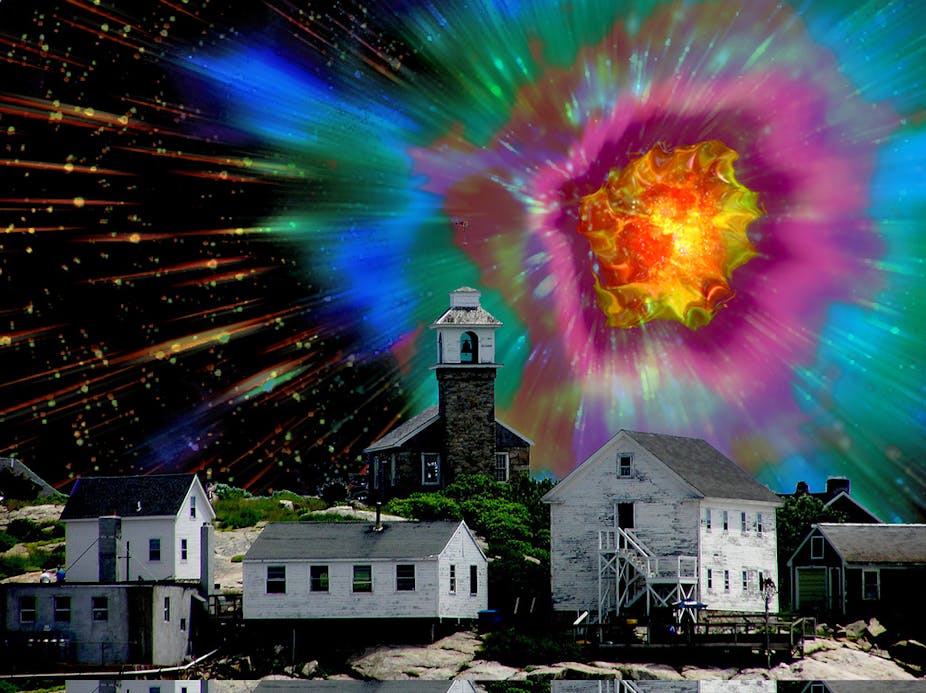The United Nations (UN) has adopted several recommendations of a new asteroid defence plan, the first steps in preventing Earth from being struck by an asteroid.
The recommendations were a response to an asteroid strike earlier this year in Chelyabinsk, Russia. This object injured thousands and was around 17 metres across.
Something ten times bigger exploded over a remote Siberian region called Tanguska in 1908. This flattened thousands of square kilometres of forest like matchsticks, with a force hundreds of times that of the Hiroshima atomic bomb.
We have only found 1% of these “killer” asteroids, meaning there are hundreds of times more out there than we know of. One of them, sooner or later, will have our name written on it.
A little disappointingly for fans of [Bruce Willis’ Armageddon](http://en.wikipedia.org/wiki/Armageddon_(1998_film), the UN’s first steps included setting up committees. These will share information about any incoming asteroids (the International Asteroid Warning Group) and decide who will coordinate Earth’s response (the Committee on the Peaceful Uses of Outer Space).
It may not sound like much, but this is in fact a big deal. One of the longstanding issues in dealing with an incoming asteroid was the legal implications of what happens if it goes wrong.
Simply put, if NASA realised the asteroid would hit the USA, and managed to only change the asteroid’s direction to avoid the States but hit China, this could be seen as an act of war (or the mother of all lawsuits at the very least).
For a global threat we need a global response, as well as a global share of the blame if it goes wrong.
The hard bit is over?
Now it’s clear(-er) who is to deal with any incoming asteroids. That leaves the “simple” matter of finding the asteroids and deflecting them.
Asteroids are small, about the size of a football field (of any footy code), which is tiny by astronomy standards. This isn’t a search for a needle in a haystack. It’s a search for that needle somewhere in all the hay on Earth.

To make matters worse the needles aren’t nice and shiny; they’re dull and barely visible. The only time asteroids are seen by our telescopes is when they reflect sunlight. That means we are completely blind to them if they are coming from the direction of the Sun (although a privately-funded space telescope called Sentinel will lie within Earth’s orbit so all asteroids heading towards the Earth would be lit up by the Sun).
In practice, we find asteroids by taking pictures of the night sky a few days apart; we then play a cosmic game of “spot the difference”. If anything has moved relative to the background stars it must be close to us.
We can then watch the asteroid’s movement over time, getting an ever-clearer idea of its trajectory (or its path through the Solar System) and whether the Earth may pass through it sometime in the future.
We can’t ever perfectly know the trajectory, but we can give a chance of this collision occurring. The UN committee will decide how bad the odds have to get before Earth has to do something about it.
Incoming asteroid, call Bruce Willis?
Once we find an asteroid our options in dealing with it will change depending on how much warning we have.
If we found it early, and have decades to deal with the threat, then it’ll be much easier than if we have only a year (although if it’s too big then we may have no choice but to bunker down and wait out a year for the Deep Impact-style hit.
Although Hollywood would have you believe otherwise, we don’t want to stop the asteroid (it’s moving too fast and is too massive to even bother trying). We definitely don’t want to blow it up (that would turn a bullet into a shotgun blast that still mostly travels in the same trajectory).
Instead we want to gently nudge the asteroid so that it just misses Earth. The earlier we catch it, the more gentle we can be.
To nudge an asteroid we have two options. The first is to fly a spacecraft beside the asteroid and either throw a bag (or rope) around it and tow it with spacecraft’s rockets. Unfortunately the asteroid may be more a pile of rubble than solid rock and could break apart.
This is why a second option might be better - a gravity tractor.
Just as the Earth pulls you towards the ground thanks to gravity, you in turn are pulling the Earth towards you. But because you’re much smaller this has no noticeable effect.
If we fly our spacecraft beside a larger asteroid, it will fall towards the surface of the asteroid, but the asteroid will have fallen towards the spacecraft by a tiny amount too.
This means that if we then use the spacecraft rockets to back away we can let them fall together again. Do this for long enough and even a giant asteroid will be “towed” by the gravity of our little spacecraft.
To protect humanity from the fate of the dinosaurs, we will need new telescopes to search the skies, and spacecraft technology to perfect the deflection of the asteroid once found. But, to misquote a famous astronaut, even though the UN committee may be one small step for man, it is a giant leap for mankind.

